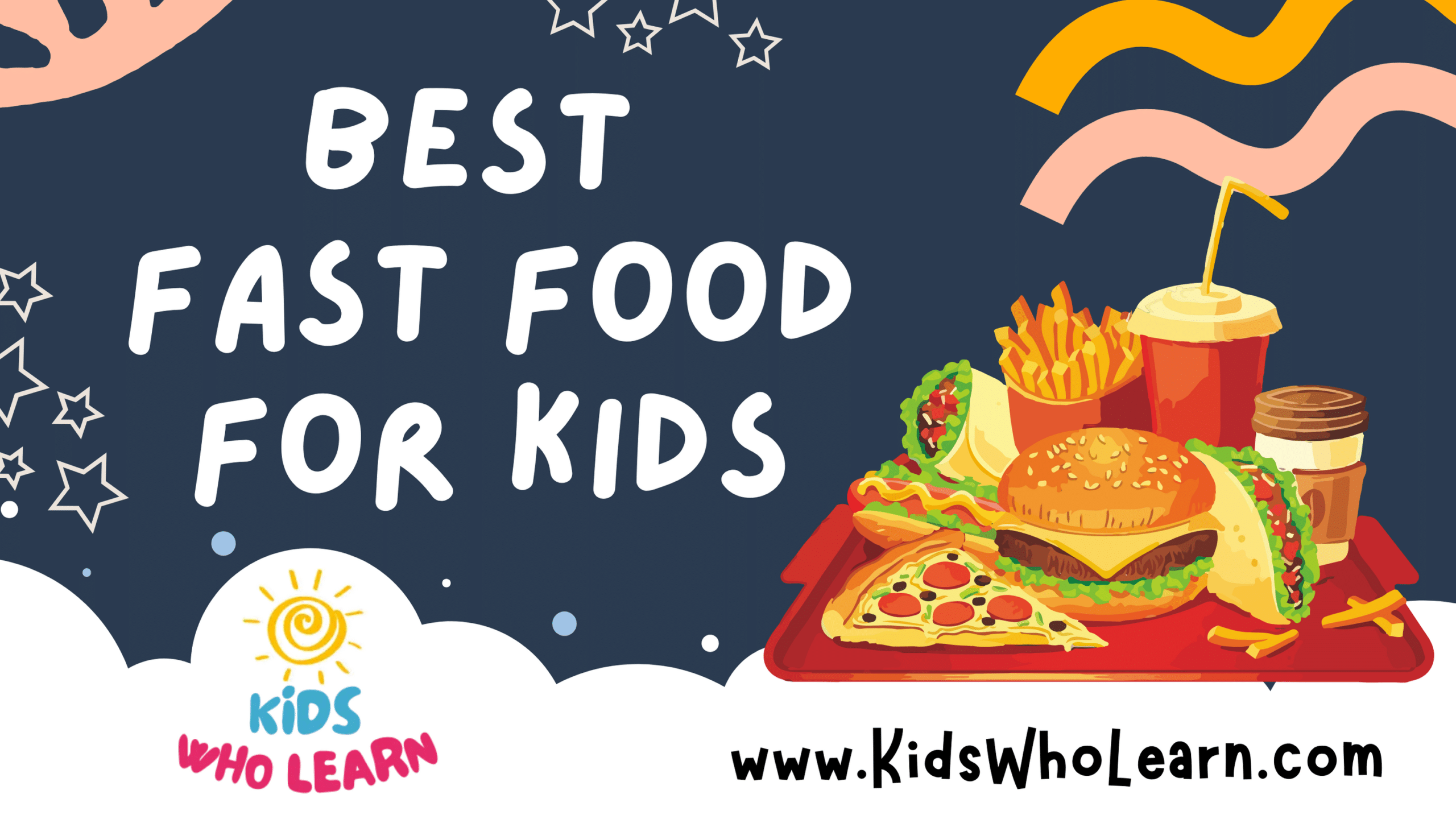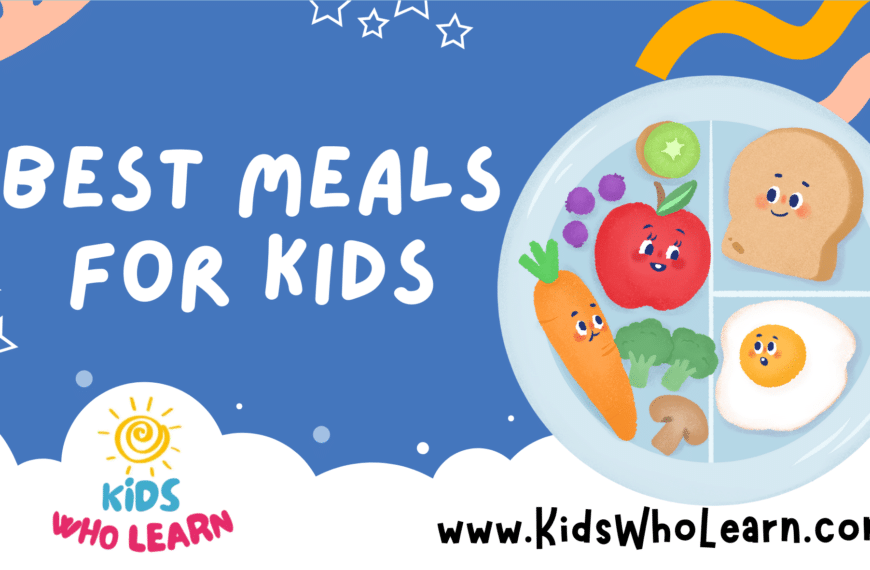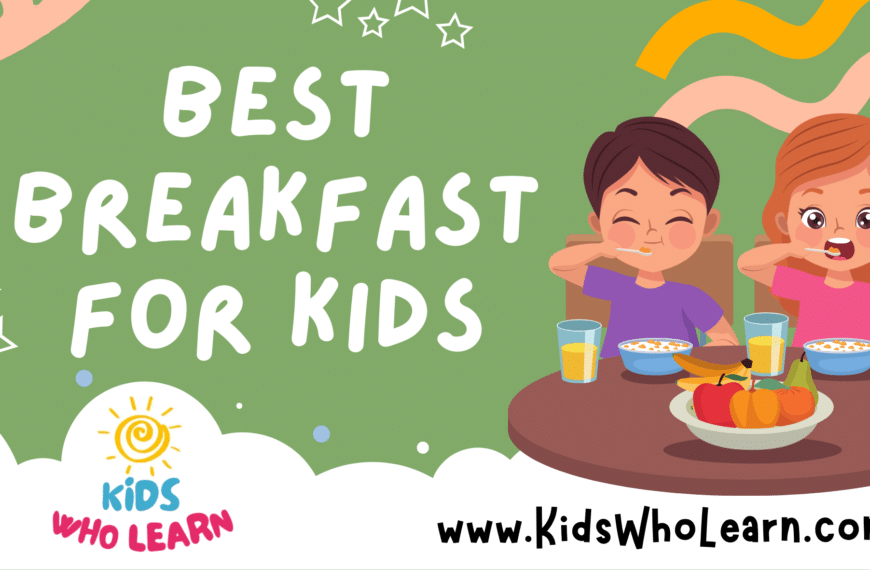When deciding on the best fast food options for kids, parents and caregivers often look for a balance between convenience and nutrition. Fast food doesn’t always have to mean unhealthy choices; many chains now offer kids’ meals that come close to meeting the dietary needs of younger eaters. It’s important to be selective, taking into consideration the nutritional value of the meal, portion sizes, and whether the meal can keep the child satisfied and engaged.
The landscape of fast food for kids has evolved to include not only healthier meal choices but also factors that address broader concerns. Eco-friendly packaging and sustainable practices are increasingly common, as families are more aware of the environmental impact of their dining choices. Additionally, the social aspect of children’s meals, including how they can foster community connections and family bonding over food, is a significant factor for many. Fast food restaurants have also made strides in accommodating dietary restrictions and providing allergen information to ensure safety for all kids.
Key Takeaways
- Balancing nutrition and enjoyment is crucial in selecting kids’ fast food.
- Sustainable practices and allergy safety are growing priorities for families.
- Social and interactive elements enhance the fast food experience for kids.
Nutritional Considerations for Kids
When we select fast food options for children, it’s crucial we consider their nutritional needs. Children require a balanced diet rich in protein, fiber, and essential vitamins and minerals to support their rapid growth and development.
Protein is vital for building tissue and immune function. In our choices, we look for lean sources such as grilled chicken or tofu. Fiber, found in fruits, veggies, and whole grains, is important for digestive health and can be seen in options like whole-wheat wraps or apple slices. We also ensure that fat contents are within healthy limits, with a preference for healthy fats that are unprocessed and naturally occurring.
Children’s meals should be lower in calories and sodium due to their smaller body size and specific dietary requirements. Fast food is notorious for high sodium levels, so we choose items with reduced sodium content.
A diet that includes a variety of fruits and veggies is important for providing essential nutrients and antioxidants. When available, we include side options like carrot sticks or seasonal fruit cups instead of fries.
Including whole grains is also a priority, as they are a healthier alternative to refined grains, aiding in maintaining a healthy weight and reducing risk factors for chronic diseases.
Lastly, dairy provides a good source of calcium and vitamin D, necessary for strong bones. Options like low-fat milk or yogurt are preferable over sugar-laden dairy desserts.
Through mindful choices and substitutions, we can guide children towards healthier eating habits that satisfy both taste and nutritional needs. Here is a quick overview of what to look for:
- Protein: Choose lean options like grilled chicken.
- Fiber: Go for fruit, veggies, and whole-grain products.
- Fat: Opt for unprocessed, natural fats.
- Calories & Sodium: Select lower calorie and reduced-sodium items.
- Fruits & Veggies: Incorporate a variety of these for essential nutrients.
- Whole Grains: Substitute refined grains with whole-grain options.
- Dairy: Prefer low-fat milk or yogurt to sugary alternatives.
Popular Fast Food Options for Kids
In selecting fast food options for kids, we focus on the balance between what’s appealing and what offers better nutrition. We take into account popular choices and the convenience that comes with fast-food dining.
Happy Meals and Their Appeal
McDonald’s Happy Meals have cornered the market by combining kid-sized portions with toys and books. The choice of a hamburger or chicken nuggets with a side and drink makes the Happy Meal a go-to for many families.
Chicken-Based Choices
Chick-fil-A and KFC are top contenders for chicken choices. Grilled nuggets and fried chicken are favorites, often accompanied by sides like fruit cups or mac and cheese.
Burger Selections
Burger King and Wendy’s offer a range of child-friendly burger choices, including cheeseburgers and small hamburgers, with sides. Melted American cheese is a staple in these sandwiches, providing flavor and added protein.
Healthier Alternatives
We’re seeing an increase in salads and grilled chicken options. Grilled nuggets and pieces from places like Chick-fil-A provide a less fatty alternative, alongside side salads and apple slices.
Sandwiches and Wraps
Subway and Panera offer turkey, ham, and grilled cheese sandwiches on multigrain bread. These provide more wholesome ingredients for a balanced meal.
Diverse Kids’ Menus
Most fast-food restaurants, like Sonic and Dairy Queen, have curated kids’ menus with diverse selections. They include more than just the staple burger and fries, offering wraps and other customizable options.
Beverage Choices
Drinks for kids widely include 1% milk, juices, or water, avoiding the high sugar content of sodas. These options help to provide a more nutritious meal.
Side Dishes
Fries may be the classic choice, but alternatives like fruit cups, beans, and applesauce offer healthier options with natural sweetness that appeals to kids.
Signature Kids’ Meals
Many chains like Sonic’s Wacky Pack or Dairy Queen’s kids’ meals offer their unique twist on the Happy Meal, often including toys and vibrant packaging.
Fast Food Breakfast for Kids
Breakfast menus aren’t left out, with offerings like small pancakes or egg sandwiches. These items often come with a side of fruit to start the day on a brighter note.
Fast Food Chains with Play Areas
Certain chains, like McDonald’s, come with a play area, making them favorites for families looking to couple mealtime with fun. This aspect adds to the overall appeal for a child-friendly environment.
Seasonal and Special Items
To keep the menu fresh, fast-food restaurants introduce seasonal specials like pumpkin-flavored items or crisp apple pies during fall, providing a special treat for the kids.
Add-Ons and Customizations
Understanding kids can be picky eaters, the ability to customize their meals with preferred toppings or sides is crucial. Lettuce, onions, pickles, or different dipping sauces can all be selected to cater to individual tastes.
Nutrition Tips from Experts
Dietitians often recommend balanced meals with appropriate portion sizes for children. Healthy choices could include limiting fried items, opting for grilled proteins, and incorporating more fruits and veggies where possible.
Takeout and Drive-Thru Convenience
Fast food is synonymous with convenience. The speedy service of drive-thrus makes it possible for us to grab a quick meal without the hassle, offering value for our time and money.
Safety and Allergy Information
When selecting fast food options for our children, we must pay close attention to safety and allergy information provided by restaurants. We always prioritize their well-being; hence, understanding the common allergens is crucial.
Common Allergens:
- Dairy
- Eggs
- Peanuts
- Tree nuts
- Fish
- Shellfish
- Soy
- Wheat
If our child has a known allergy, we meticulously review the ingredient list and cross-contact warnings. Many fast food chains now offer allergen charts and list potential cross-contamination risks on their websites and in-store.
We also consider sensitivity to ingredients like gluten or lactose. For children with such sensitivities, we seek out places offering gluten-free or lactose-free items.
Precautions:
- Ask about food preparation processes to understand potential cross-contamination risks.
- Inform the staff about our child’s allergies for them to take necessary actions.
- Encourage our children to always ask about ingredients.
Remember, exercising caution is a non-negotiable aspect of our responsibilities as caregivers, and ensuring a safe dining experience is always our prime objective.
Eco-Friendly and Sustainable Practices
We recognize the growing importance of environmentally conscious options in fast food for our children. Our focus is to include ecologically beneficial methods in our daily operations, as we understand that sustainable practices are not just a trend, but a responsibility.
Packaging: We prioritize using biodegradable or recyclable materials for our packaging. This substantially reduces the amount of waste we contribute to landfills. By doing so, we take significant steps toward a healthier planet.
- Materials Used:
- Paper: Sourced from certified sustainable forestry initiatives.
- Plant-based Plastics: Utilized for their compostable characteristics, decreasing plastic pollution.
Waste Management: We have implemented a systematic approach to managing waste in our restaurants.
- Recycling Bins: Strategically placed to encourage customers to separate recyclables.
- Composting: Food waste is composted when possible to support circular waste practices.
- Training: Our staff receives training on minimizing waste and proper sorting techniques.
Energy Usage: Energy conservation is another pillar of our approach.
- Energy-efficient appliances: Reduce our carbon footprint.
- LED lighting: Cuts down on energy consumption and costs.
By committing to these principles, we aim to nurture a more sustainable future for our kids, where fast food does not come at the expense of our environment. We continuously explore new ways to advance our eco-friendly actions because safeguarding our planet is tantamount to ensuring a healthier future for the next generation.
Community and Family Engagement
We recognize the importance of engaging both communities and families when choosing the best fast food for our kids. Establishing relationships with local businesses and family-oriented activities can make mealtime an enriching experience.
Family Outings
Fast food restaurants often offer play areas or host family nights. By participating in these events, we enhance bonding time and make dining out fun for our children.
- Community Events:
Local fast food chains sometimes sponsor community events, such as sports games or school fundraisers, fostering a sense of community spirit.
Nutritional Workshops
We promote restaurants that organize workshops, where families learn about balanced diets together, directly tying engagement with education.
- Interactivity:
Interactive menus or games can teach our kids about nutrition in an enjoyable way.
Partnerships with Schools
Collaborations between fast food establishments and educational institutions can lead to benefits like nutritious lunch programs and discounts for families.
- Rewards for Students:
Achievement-based free meals can motivate kids to excel, bridging the gap between academic success and family outings.
Feedback Loop
We encourage constructive feedback between families and fast food chains to ensure the menus meet both nutritional requirements and taste preferences.
- Surveys & Feedback Forms:
Input from families helps tailor the food offerings and the overall dining experience.
We aim to make nutritional choices a unifying factor for our communities and a catalyst for engaging family activities. By integrating these elements, we ensure the well-being of our children and the strengthening of bonds within families and the larger community.
Loyalty Programs and Discounts
When we seek the best value in fast food for our kids, loyalty programs and discounts are a key consideration. Many fast food restaurants cater to families with enticing loyalty rewards and regular promotions that make meals more affordable.
Loyalty Programs: These are designed to reward frequent customers. Typically, we earn points for every purchase that are redeemable for free items or special discounts. For example:
- McDonald’s McCafé Rewards: Buy 5 McCafé drinks, get 1 free.
- Chick-fil-A One: Earn points with every purchase to redeem for free food.
Early Access to Promotions: Loyalty members often receive early notification or exclusive access to deals.
Discounts: Fast food chains regularly offer discounts that provide significant value. Here are common types:
- Time-specific Discounts: Reduced prices during certain hours.
- Bundle Deals: Meals that offer a combination of items for a lower price than buying individually.
Promotions: These are limited-time offers that usually coincide with new menu items or special events. For instance, “Kids Eat Free” promotions during certain days or holidays.
To benefit from loyalty programs and discounts, we should:
- Sign up for the restaurant’s app or email list.
- Keep track of promotions through social media or the company’s website.
- Take advantage of birthday discounts many chains offer for children’s birthdays.
Loyalty programs and discounts are fantastic ways we can enjoy our favorite fast food options more frequently while keeping our budgets in check. It’s about finding the right balance between cost and the joy of a meal out with our children.
The Role of Toys and Entertainment
When we consider fast food options for children, the presence of toys and entertainment often plays a pivotal role in attracting families. Toys, often bundled with kids’ meals, serve as both a marketing tool and a source of enjoyment. Our focus on family-friendly environments prioritizes the inclusion of a play area to keep children engaged.
- Toys: Including a toy with a meal directly affects a child’s dining experience. These toys are typically themed around popular characters or current events, capturing kids’ interests while encouraging collection and repeat visits.
- Entertainment: In addition to physical toys, digital games or interactive activities offered in-house can significantly enhance the family dining experience. This entertainment aspect becomes a value addition, transcending the basic need to feed.
- Play Area: A designated play area within the restaurant premises not only allows children to have a space for physical activity but also provides parents with the assurance that the dining establishment caters to a child’s need to play in a safe environment.
- Family Friendly: Our dedication to maintaining family-friendly atmospheres ensures that the dining experience is comfortable and convenient for both parents and children. This includes providing amenities and services that cater to family needs.
By incorporating these elements, we strive to create a welcoming space for families, making our fast-food restaurants about more than just the food—it’s about the positive experience that lingers in a child’s memory.
Strategies for Managing Treats and Indulgences
In choosing treats for kids, we aim to strike a balance between enjoyment and health. Indulgences, albeit in moderation, can be part of a child’s balanced diet. Here’s how we can manage them:
- Set Clear Guidelines: We establish limits for treats to ensure they remain occasional indulgences. For instance:
- Number of Treats Per Week: Two to three small treats.
- Portion Sizes: Defined and consistent.
- Opt for Nutritional Quality: We prefer treats that offer some nutritional benefits over empty calories, like those containing fruits, nuts, or whole grains.
- Involve Kids in Decision-Making: Teaching kids to make mindful choices empowers them to handle indulgences responsibly.
- Encourage Mindful Eating: We teach our children to savor their treats, enhancing the experience and discouraging mindless overeating.
- Offer Balanced Choices: Whenever we present treats, we pair them with healthier options like sliced fruits or vegetables.
- Prioritize Home-Made Treats: We make indulgences at home where we can control the ingredients and portions, ensuring our treats are as wholesome as possible.
We use this table to track and plan our indulgences for the week:
| Day | Treat | Portion Size | Notes |
|---|---|---|---|
| Monday | Homemade cookie | 1 medium | Whole grain flour used |
| Thursday | Dark chocolate | 2 squares | Paired with strawberries |
| Saturday | Fruit popsicle | 1 popsicle | Made with real fruit juice |
By following these strategies, we can enjoy treats without overindulgence, keeping our kids happy and healthy.
Innovations in Kids’ Fast Food
In recent years, we’ve witnessed a notable shift in the fast-food industry with a growing emphasis on catering to the younger demographic. Our observations pinpoint several exciting innovations and trends that specifically target enhancing the fast food experience for kids.
To begin, Healthy Options have taken center stage. Fast food chains now regularly incorporate fruit, vegetables, and whole-grain options into their kids’ menus. This reflects a commitment to nutrition without compromising on convenience.
Another innovation is the introduction of Interactive Meal Experiences. Technology has enabled fast food restaurants to provide digital games or interactive apps with their kids’ meals, aiming to make the dining experience both fun and engaging.
We’re also seeing an upsurge in the use of Sustainable Practices. More brands are employing eco-friendly packaging and committing to using ingredients sourced from sustainable practices. This not only educates kids on environmental responsibility but also aligns with the values of their parents.
| Trend | Description |
|---|---|
| Customization | Offering kids the option to customize their meals to their taste. |
| Portion Control | Adjusting meal sizes to be more age-appropriate and health-conscious. |
| Allergen-Free Options | Expanding menus to include gluten-free, nut-free, or dairy-free items. |
Our understanding of kids’ preferences directs us toward Flavor Innovation—creating fun, new flavors that appeal to young taste buds while remaining kid-friendly in terms of spice and complexity.
We consider it paramount to keep a pulse on these evolving trends and innovations in kids’ fast food to continue meeting the demands of our ever-changing consumer base.
Healthy Habits and Fast Food
When we navigate the world of fast food as guardians for our children, we emphasize the importance of balance and healthy habits. Fast food can be part of a balanced lifestyle if we make informed choices about the foods we’re providing to our youngsters.
- Grilled Over Fried: Opt for grilled items rather than fried. Grilled chicken pieces or sandwiches provide a leaner protein source.
| Avoid | Opt For |
|---|---|
| Fried chicken | Grilled chicken |
| French fries | Apple slices |
| Cheeseburgers | Veggie burgers |
- Size Matters: Choose smaller portion sizes to keep calorie intake in check. Kids’ meals are typically more appropriate in size for young appetites.
- Hydration with Care: Encourage water or milk over sugary sodas. Quenching thirst without excess sugar benefits overall health.
- Increase Veggies: Whenever possible, incorporate vegetables, such as salads or veggie sides. They can provide necessary nutrients and fiber.
- Moderation is Key: Treat fast food as an occasional indulgence rather than a regular occurrence to maintain a healthy balance.
We recognize there are times when fast food is a convenient option. By applying these practices, we can support a healthy lifestyle for our children while still enjoying the occasional fast food outing. Our choices can make a significant difference in fostering healthier eating habits.
Guide to Portion Sizes
When we consider portion sizes for children at fast food establishments, it’s crucial to understand that they are significantly smaller than adult portions. Serving sizes should be adjusted to meet the energy needs and appetite of a child, which are typically less than those of an adult.
For Proteins:
- Children (4-8 years): 2-4 ounces
- Children (9-13 years): 3-5 ounces
- Adults: 5-7 ounces
For Fries:
- Children: half a small order or a kid’s size
- Adults: one small order
In terms of fries, for example, a child’s portion is approximately half of a small adult order. This helps to prevent overconsumption of calories and fat.
When it comes to drinks, we recommend:
- Children: 6-8 ounces of water, milk, or juice
- Adults: 8-12 ounces of water or other beverages
It’s essential to prioritize water and milk over sugary drinks to maintain a balanced intake.
Vegetables and Fruits:
- A serving for a child should be around half a cup, while adults might opt for one cup. The goal is to ensure kids get a variety of nutrients without consuming excessive calories or sugar.
Lastly, for desserts, children should enjoy smaller portions, such as a couple of cookies or a small scoop of ice cream, which align with their dietary needs without excessive sugar intake.
Remember, we’re aiming for balance and moderation in portion sizes to support healthy growth and development in kids while also indulging in the convenience of fast food on occasion.
Frequently Asked Questions
In this section, we’ll provide clear answers to common questions about fast food options for children, considering nutrition, cost, and preferences.
What are the top choices for children’s meals at popular fast food restaurants?
Our research shows that among the popular choices are McDonald’s Happy Meals, Burger King’s Kids Meals, and Subway’s Kids’ Pak meals. These options often come with a variety of main courses, such as hamburgers, chicken nuggets, or sandwiches, paired with sides like apple slices or yogurt.
What nutritional considerations should parents make when selecting fast food for their children?
We advise parents to look for meals that are lower in salt and sugar, contain a balance of protein, carbohydrates, and healthy fats, and include a serving of fruits or vegetables. It’s also wise to check the calorie count to ensure it’s appropriate for a child’s dietary needs.
Which fast food chains offer meal options suitable for toddlers?
Chains such as Chick-fil-A and Panera Bread offer smaller portions and softer food items that are suitable for toddlers. Some chains also provide pureed foods or items that can be easily broken into smaller, manageable pieces.
What are the current toy options in children’s meals at leading fast food restaurants?
Toys in children’s meals can vary widely but often include characters from current movies or popular TV shows. Restaurants usually rotate their toy offerings periodically to keep their young customers engaged and entertained.
How does the cost of kids’ meals vary among different fast food chains?
The cost of kids’ meals can vary depending on location and promotions, but generally, prices range from $3 to $6. High-end fast food chains might charge a bit more, whereas local chains or value menus could offer lower prices.
What are some examples of healthier fast food meal choices for children?
Healthier choices often include grilled instead of fried meats, sides like apple slices or carrot sticks instead of fries, and water or milk as a beverage rather than sugary soft drinks. For instance, Wendy’s offers grilled chicken wraps, and many chains now include fruit cups as a side option.













